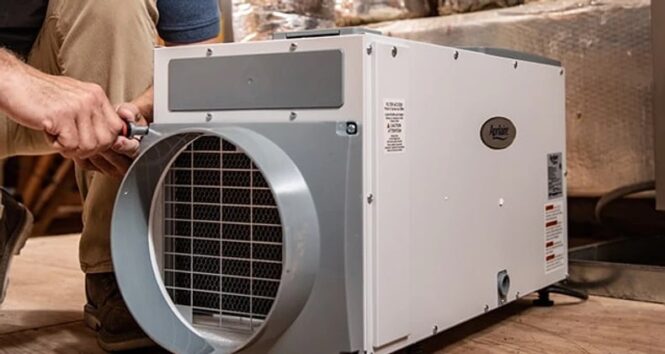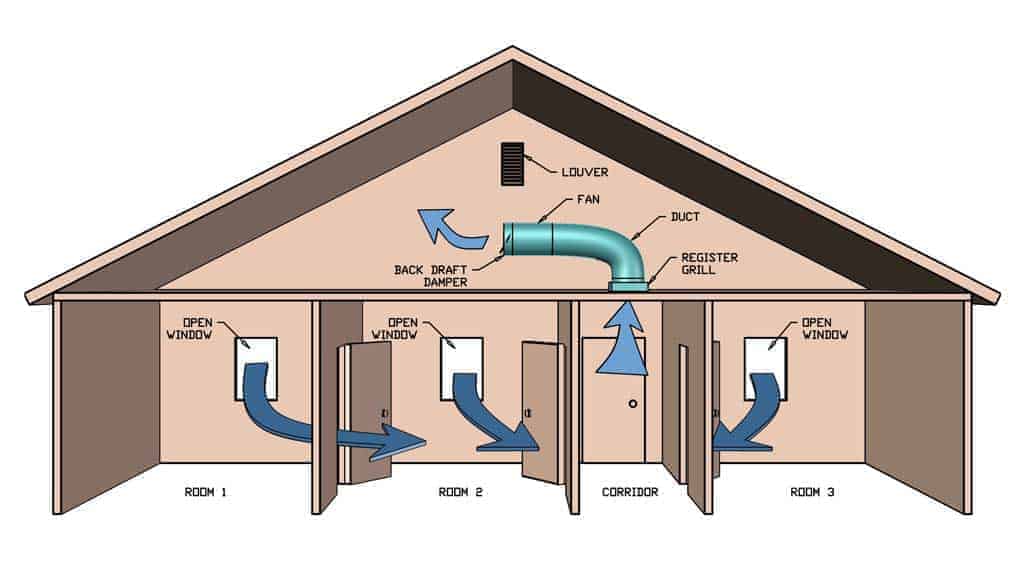Having a wet or damp basement can be highly problematic. Whether you want to utilize the space to make more of your home and have an additional living area or playroom or even a home office, or you simply want to use it as storage or for your laundry area, if it is wet or even a little damp, that’s not going to be possible. All it will do is cause your possessions to be damaged and essentially be completely unusable.
This is why it’s essential to make your wet or damp basement dry. You’ll be able to use it for any purpose, and once the basement is dry, this will prevent any dampness from rising up through the property, affecting and potentially destroying other areas. Read on to find out how this can be done.
Install A Dehumidifier

As stated by www.sedonawaterproofing.com, a dehumidifier will, as the name suggests, sucks moisture out of the air, making it much dryer overall. Many people use these units in their home as a matter of course, even if there is no damp or moisture issue, just because they are excellent at maintaining good climate control and making the property more comfortable.
In a wet basement, however, a dehumidifier becomes something of a necessity rather than a luxury. You can leave the dehumidifier running in the basement, and this should make the entire space much less damp; in many cases, it can solve the issue entirely.
And since a good dehumidifier that can handle an average-sized basement will cost you something under $200, it’s a worthwhile investment. Even if it doesn’t do the entire job for you, it will have worked in some way and made an excellent start.
Ventilate the Area

Of course, before you can use a dehumidifier in the most effective way, you will need to air the basement out. To do this, you will need to add some ventilation.
If you have windows in the basement (depending on how the property is set out, this might be a possibility, even if they are only very small windows), then having them partially open (being aware of security at all times, of course) will do this job perfectly. If there are no windows, then running a fan can help hugely. Make sure the door to the basement is open so that the air can circulate fully.
Reseal the Concrete

One reason why basements can get so damp and wet is that moisture from outside can work its way through the concrete walls if they are untreated. This is why basement waterproofing should be done as soon as possible. Although it won’t dry out the basement on its own, if you can reseal the concrete then the moisture issue won’t become any worse.
At this point, you can concentrate on ridding the house of the excess moisture, and what is left should be a dry, usable basement area. Sealants come in lots of different strengths and types, so you must carry out sufficient research before purchasing anything. It’s also a good idea to be sure you know exactly how to apply the sealant so that you’re not wasting your time or money and the job is completed successfully.
Attend to Air Leaks
Air leaks can be just as problematic as water leaks when it comes to making your basement damp, even though this might not be the first issue that comes to mind when you think of them. Air leaks can come from a variety of different places, including the seals around windows, gaps where pipework enters the basement (including where you might install any tumble dryer vents through the wall), and other small holes and entry points.
The air will leak through these points and, when it meets the warmer air from the inside (or the cooler air if it’s a warm day), moisture can form. Condensation will appear on your walls and windows if this is the case, and the moisture from this can easily enter the air of your basement, making the entire place feel damp.
The best thing to do in this case is to seal the gaps more carefully. Use a silicone sealer or a foam sealant, and ensure that every hole leading into your basement is closed off where possible. More moisture will enter if this is not done, and no matter what methods you use to dry your basement, it will always be damp.
Check Your Downspouts

No matter what measures you put in place, if the underlying cause of the dampness in the basement is not dealt with, the problem will continue to reoccur. It might seem as though you cannot see what the issue is, but that could simply be because the problem is not within the basement itself – it is actually outside.
Downspouts can be a big reason for dampness in a basement, yet they are not often considered when thinking about how to fix the problem. Water will cascade down the spout, and sometimes, if there is a blockage or the pipes are too small, that water won’t drain away as it is meant to, but instead will leach into the ground.
If you have a basement, this water can easily start to find its way in. Check your downspouts regularly to ensure that there are no blockages and that the water drains away quickly and efficiently. If it doesn’t, this could be the reason why your basement continues to be damp, even if you have done all you can think of to protect it and dry it out.
Inspect Your Driveway
Driveways can also trap a lot of moisture which can then make its way to your basement. If there are any cracks, gaps, or any other kind of damage in the driveway, this could be the cause of all your troubles.
By fixing these problems, which will make the entire front of your home look better as an added benefit, you can prevent a lot of water ingress to your basement. Carry out the current basement waterproofing once this is done, and your problems should be over.
 Imagup General Magazine 2024
Imagup General Magazine 2024
